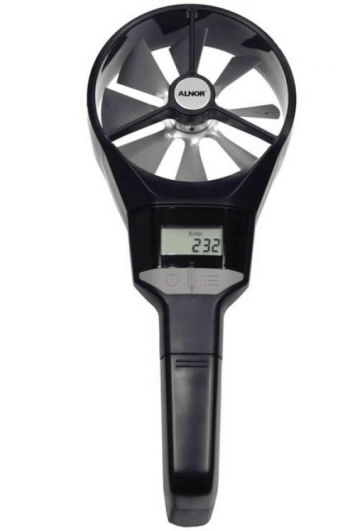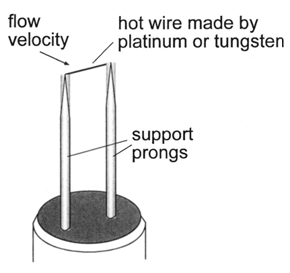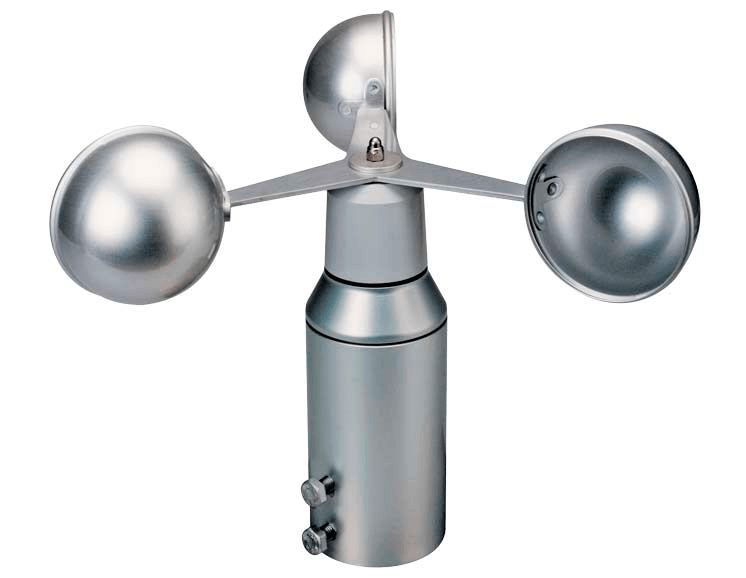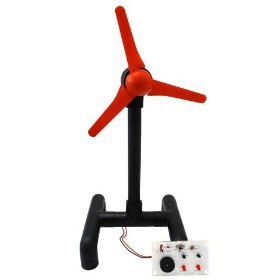Weather Instruments Information
 Weather instruments include sensors, gauges, and other devices designed to measure one or multiple weather conditions. They measure and display information about atmospheric conditions for the purpose of weather forecasting and study. These measurements can be taken manually or automatically, depending on the capabilities of the device.
Weather instruments include sensors, gauges, and other devices designed to measure one or multiple weather conditions. They measure and display information about atmospheric conditions for the purpose of weather forecasting and study. These measurements can be taken manually or automatically, depending on the capabilities of the device.
Placement of weather instruments in of key importance when taking measurements. For example, wind measurement instruments must be placed in an area which is completely free from obstructions which may interfere with natural wind conditions, while placing temperature or humidity instruments in direct sun often results in inaccurate measurements.
The crude drawing below shows a typical weather station setup. This particular station includes three different anemometer placements for wind measurement, a rain gauge, and an unobstructed solar sensor.

Image credit: McKinney Automatic Weather Station
Weather instruments are used by professional meteorologists and amateurs alike. Personal weather stations are sometimes established for the sole enjoyment of the owner, but data from these stations is often shared through initiatives such as the Citizen Weather Observer Program (CWOP) for short-term forecasting. Due to the variety of instrument quantity and quality, however, amateur reporting is subject to wide variations in measurement accuracy.
Types of Weather Instruments
Weather instruments are classified foremost by the type of atmospheric conditions they measure. Complex weather meters may measure multiple conditions listed below.
Wind Speed
Wind speed — properly, the change in air velocity — is measured by an anemometer, which is also known as a wind speed meter or air speed meter. Anemometers are produced in several different forms, each of which is most suitable for a specific application, as shown in the table below.
Wind speed measurements are crucial to weather forecasting, aircraft and maritime operations, plant research, and construction projects. As shown below, some anemometers also measure wind direction, which is crucial for predicting local weather activity.
|
Type |
Description |
Application |
Image |
|
Vane |
Contains propeller vanes within a tube; axis of rotation must be parallel to wind direction for accurate measurement. |
Closed spaces with predictable wind direction; measuring mean velocity. |
|
|
Thermal/Hot-wire |
Consists of a heated element which cools when exposed to wind; cooling causes a change in element resistance, resulting in relationship between wind speed and resistance; high frequency response. |
Applications requiring turbulence measurement; measuring mean velocity; measuring rapid fluctuations in velocity. |
|
|
Cup |
Simplest type; consists of hemispherical cups on horizontal arms; air flow turns the cups proportional to wind speed. |
Simple weather stations; measuring mean velocity; general industry standard for wind studies. |
|
|
Windmill |
Similar to vane type, but with open windmill blades; must be parallel to wind direction; often fitted with a complementary vane to change direction with air flow . |
Measuring mean velocity; simultaneous velocity/direction measurements. |
|
Rain/Snow Measurement
Rain and snow gauges measure the amount of liquid precipitation. Rain gauges — also known as udometers, pluviometers, or ombrometers — typically measure rainfall in millimeters but may also report data as inches or centimeters. Like most weather instruments, these gauges can be manually-read or read automatically by automatic weather stations (AWS).
Rain gauges can take a variety of forms, as listed below.
Standard rain gauges are graduated cylinders with integral funnels. They are typically designed with a double wall so that the outer compartment catches rainwater that exceeds the capacity of the inner reservoir. The excess water can then be measured in a separate cylinder and added to the originally-measured amount.
A weighing-type gauge consists of a container resting on a scale. The scale periodically weighs the container and continuously records or graphs the resulting weight changes.
Tipping bucket gauges are more complex devices consisting of a funnel which channels water into a pivoting seesaw-like apparatus. After a preset amount of precipitation is detected, the apparatus dumps the collected water and sends an electrical signal to record the amount of rainwater collected. These gauges therefore not only record total rainfall, like a standard gauge, but can also measure the rate of rainfall. However, rainfall which stops before the seesaw tips can result in inaccurate total measurements.
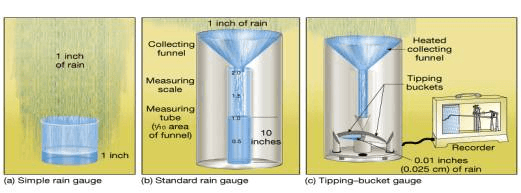
(left to right) A simple rain gauge; a standard gauge; a tipping gauge.
Image credit: The University of Maryland
While similar to rain gauges, snow gauges are different in design and function. Snow gauges typically feature a large funnel-shaped catchment which attaches to a cylindrical gauge. When snow is collected, the gauge is removed and the snow is allowed to melt. The accumulated water is measured (typically in centimeters) and is then multiplied by 10 to determine the original height of the snowfall.
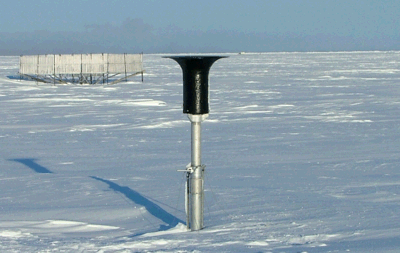
A snow gauge. Image credit: University of Alaska Fairbanks
Temperature
Temperature may be measured by analog or digital thermometers. Additional information about these devices can be found at the Industrial Thermometers Selection Guide.
Atmospheric Pressure
Atmospheric pressure is measured by barometers and is useful for determining short term weather changes and to determine frontal boundaries. Analog barometers typically consist of a mercury-filled tube. When atmospheric pressure rises, it places more force on the tube and forces the mercury higher. Extensive use of mercury barometers has resulted in atmospheric pressure being expressed in inches or millimeters of mercury (inHg or mmHg).
Aneroid barometers are a type of analog barometer constructed with a small, flexible beryllium/copper capsule called an aneroid cell. The cell is attached to a strong spring. Changes in atmospheric pressure cause the cell to expand or contract; this movement drives a system of mechanical levers which translates the pressure change into the movement of the gauge's needle.
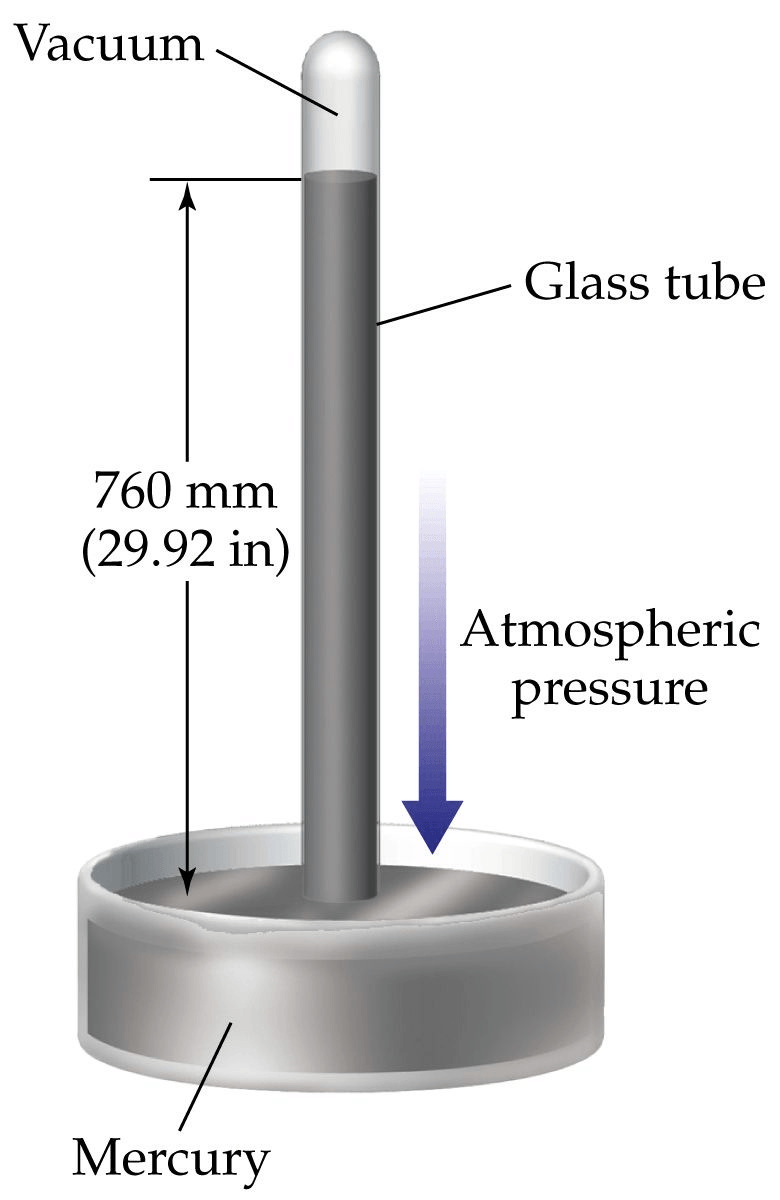
A simple mercury barometer
Image credit: University of Washington
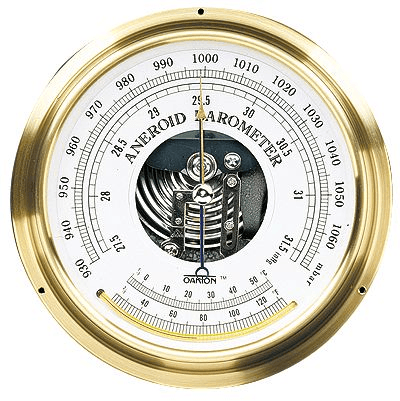
A barometer gauge, with inHg (inner numbers) and hectopascals (hPa)
Image credit: Cole Parmer
Digital barometers are newer devices which use pressure sensors to measure changes in air mass. They typically feature special capabilities such as data recording, adjustable unit displays, and audible alarms.
Humidity
Measuring humidity is more complex than the measurement of other atmospheric conditions. Older designs for hygrometers — devices designed to measure humidity — relied of the measurement of wet vs. dry temperature and even the tension of human hair to determine humidity. Modern hygrometers typically use resistive or capacitive sensors, which detect the effects of humidity on the dielectric constant and resistance, respectively, of a specialized polymer material. Still, resistive sensors, which are less sensitive and resistant to temperature change than capacitive types, must be combined with a temperature sensor for accurate measurement, as changes in the conductive polymer tend to be affected by both humidity and temperature.
Almost all hygrometers sense and measure relative humidity, which refers to the ratio of the partial pressure of water vapor in the air to the saturated vapor pressure. (This is why relative humidity is expressed as a percentage.) Because relative humidity depends on both absolute moisture content as well as temperature, accurate humidity sensing is very difficult. Even when a hygrometer is measuring humidity in a controlled test chamber, small temperature changes within the chamber can still result in variations in relative humidity and inaccurate measurements.
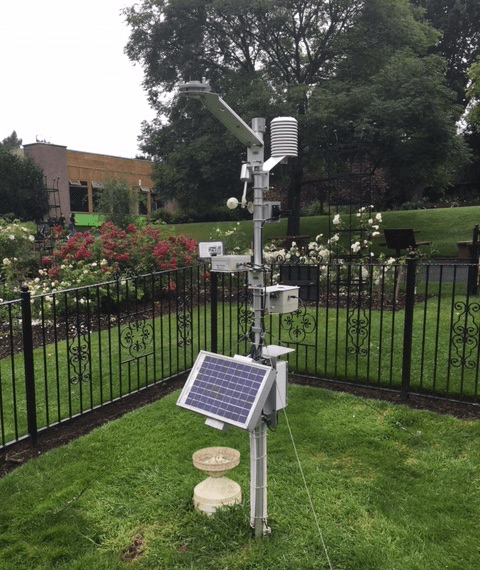
Weather station at Edinburgh Zoo
Dew Point
Dew point refers to the temperature at which water vapor condenses into liquid at the same rate it evaporates. This measurement is useful in determining relative human comfort levels as well as the likelihood of icing and fog on aircraft. Dew point is intimately related to relative humidity and is sometimes measured with a dew point meter, which consists of a metal mirror which is cooled as air is passed over it. The temperature at which dew forms on the mirror is the dew point. More modern dew point meter designs incorporate a capacitive sensor similar to those used in hygrometers. Dew point meters are often combined into hygrometers, so that the device is capable of measuring both relative humidity and dew point.
Specialized Instruments
In addition to the instruments listed above, weather stations may make use of specialty instruments to measure less-common atmospheric parameters. Some examples are listed below.
- Visibility — measured with a transmissometer.
- Cloud ceiling — measured with a ceilometer.
- Solar radiation — measured with a solar radiation detector.
- Ultraviolet index — measured using a UV sensor.
Standards
Weather instruments may be produced, used, and tested according to various standards; these standards are typically specific to the instrument type. Example standards include:
ASTM E2551 - Standard test method for calibration of humidity generators for use with thermogravimetric analyzers
BS 692 - Specification for meteorlogical thermometers
BS 7843-1 - Acquisition and management of meteorological precipitation data from a raingauge network
ASTM D5096 - Standard test method for determining the performance or a cup or propeller anemometer
References
MachineDesign - Humidity sensors
Weather FAQs - Basic Meteorology
Image credits:
Vaisala | Sherman Instruments | URRG | DirectIndustry | Two Rock 4-H
- Analog Current
- Analog Display
- Analog Front Panel
- Analog Voltage
- Base Mounted
- Battery Powered
- Built in alarm indicator
- Chart Recorder
- Computer Controllable
- Digital Display
- Digital Front Panel
- Electrical Heater (For winter environments)
- Integral Datalogger / Memory
- Leveling fixture
- Measures Barometric Pressure
- Measures Dew Point
- Measures Rain/Snow Fall
- Measures Relative Humidity
- Measures Solar Radiation
- Measures Temperature
- Measures Total Cloud Cover
- Measures Water or Moisture Content
- Parallel Interface
- Phone/Modem Type Interface
- Pole-mounted (Typically via clamps)
- Programmable
- Pulse Signal
- Senses Wind Direction
- Senses Wind Speed
- Sensor Only
- Sensor System
- Serial Interface
- Switch or Relay
- Video Display (CRT etc.)
- mercury barometer
- barometer
- weather station
- rh sensor
- wireless wind gauge
- dew point hygrometer
- RAIN GAUGE
- thermor home weather station
- aneroid gauge
- airborne weather radar
- aneroid barometer
- aneroid barometer mechanism
- ozonometer
- wind sensor
- barometer sensor
- barometer weather instruments
- ethernet weather stations
- handheld digital barometer
- outdoor weather instrument
- portable digital barometer
- SNOW PELLETS
- trw rain sensor
- weather balloons
- weather station mounting
- wet bulb temperature
- wet dry bulb
- wet/dry bulb thermometers
- raytek thermopile
- wind speed and direction sensor
- 10 weather instruments
